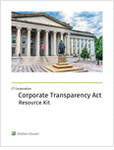Okay, readers, time to break out your litigation scorecard concerning the average wholesale price index for pharmaceuticals. If you’ve been scoring correctly, you’ll note that all of the defendants in the multidistrict class action brought by third-party payers, consumers and insurers have settled, save one. (Here’s our previous coverage of an unsuccessful challenge to two of those settlements, as well as a handy definition of average wholesale price.)
In the “financial penalty” square of your scorecard, you should also have noted that in June 2007, Massachusetts federal district court Judge Patti Saris ordered the lone remaining defendant, AstraZeneca, to pay $13 million to a test-case class of Massachusetts-only third-party payers.
It’s now time to place a purple “affirmed” star next to “1st Circuit appeal.” On Wednesday, a three-judge panel of the 1st U.S. Circuit Court of Appeals found “no material factual or legal infirmity in the district court’s disposition of the case” and upheld Judge Saris’s ruling.
Saris said in her 2007 opinion that AstraZeneca acted “unfairly and deceptively” by causing the publication of false and inflated prices for its drug Zoladex, exceeding actual physician acquisition costs by as much as 169 percent. AstraZeneca, she found, then marketed these mega-spreads between the physician’s acquisition costs and the amount they’d be reimbursed for the drug in order to induce doctors to buy and administer Zoladex.
On appeal, AstraZeneca, represented by Mark Haddad of Sidley Austin, argued against the ruling on pre-emption grounds, contending that when Congress enacted the Medicare program, it pre-empted states from regulating drug companies. AstraZeneca also argued that the third-party payers knew about the price spread.
The appeals court didn’t buy these arguments. It also took the opportunity to deliver a stinging smack to AstraZeneca. “Suffice it to say that we are unpersuaded by the record evidence that the [third-party payers'] knowledge of systematic AWP inflation was sufficient to insulate AstraZeneca from liability for its practice of reporting one, inflated price for reimbursement purposes while charging another, discounted price to providers, and for using the difference between these prices as a lever for increasing the market share for Zoladex,” the court said. “This is precisely the kind of scheme that [state unfair and deceptive practices law] was meant to address, and its use to impose liability here is consistent with the Constitution, with federal and state law, and with the goals, purposes, and design of the Medicare program.”
That’s bad news for AstraZeneca, considering that Judge Saris’s ruling applied to a test class and will presumably reverberate through the broader class action against the drug company.
But if there’s a silver lining, it’s that Judge Saris and the 1st Circuit probably won’t have an impact on the many government suits alleging that drug companies manipulated the average wholesale price index, according to the plaintiffs lawyer in the AstraZeneca litigation, Steve Berman of Hagens Berman Sobol Shapiro. Berman told us that state, city and county governments are pursuing claims under a slightly different theory, attempting to hold the drug companies liable for any price discrepancy between the published AWP and what doctors paid. “They’re going to have a heck of a time doing that,” he said, noting that Judge Saris, in the AstraZeneca case, had allowed for up to a 30 percent discrepancy.
So in the “future of government AWP” cases column, we’re entering a question mark on our scorecard.
This article first appeared on The Am Law Litigation Daily blog on AmericanLawyer.com.




